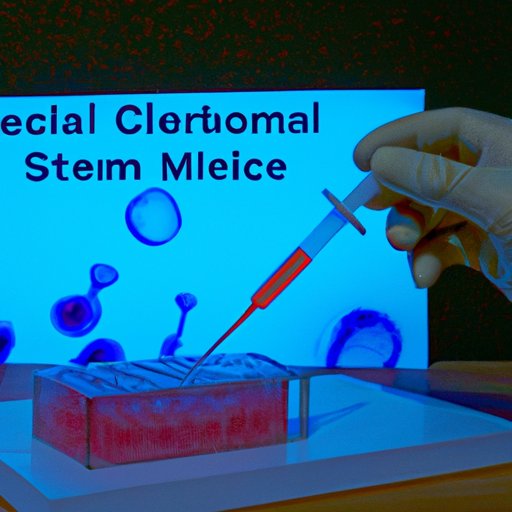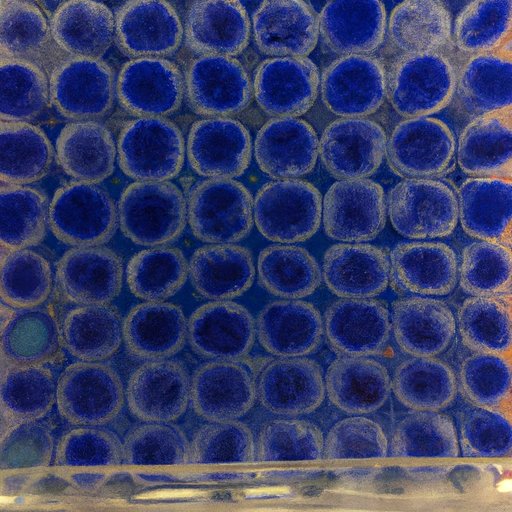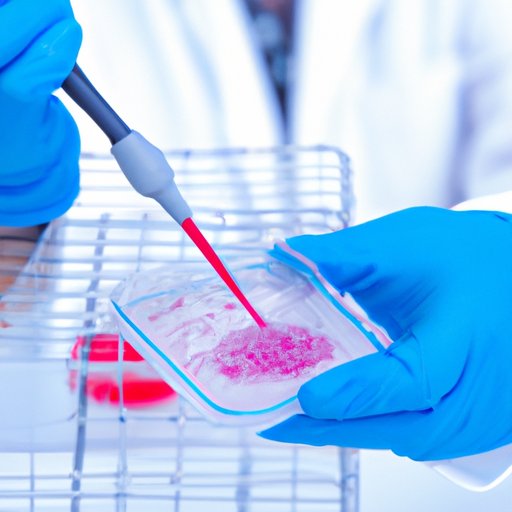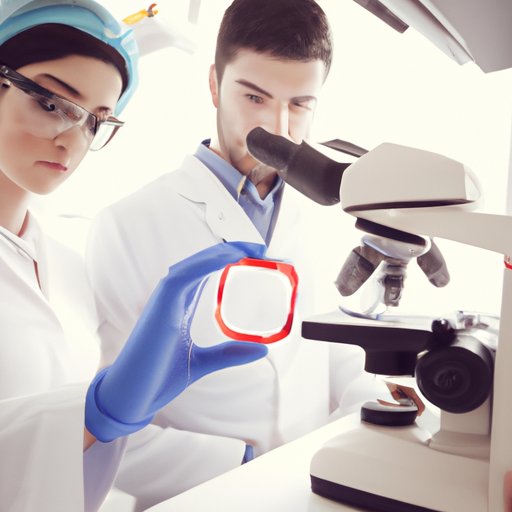Introduction
Stem cell therapy is a rapidly evolving field of medical science that holds great promise for treating numerous diseases and conditions. This article will explore what stem cell therapy is, the potential benefits and risks associated with it, and how it works. We’ll also take a look at the latest research on stem cell therapy and discuss the potential of this therapy in the future.
What is Stem Cell Therapy?
Stem cell therapy is an experimental treatment that uses stem cells to replace or repair damaged tissue and organs. The goal of this therapy is to restore normal function to specific areas of the body that have been damaged by disease or injury. Stem cells are special cells that can divide and differentiate into different types of cells, such as heart, muscle, and nerve cells. They can also self-renew, meaning they can create more of themselves.
Overview of Benefits and Risks
Stem cell therapy has the potential to treat many diseases and conditions, including diabetes, heart disease, spinal cord injuries, and cancer. It may also help reduce inflammation and promote healing in injured tissues and organs. However, there are still some risks associated with stem cell therapy, including the possibility of developing blood clots, infections, and allergic reactions.

Exploring the Science Behind Stem Cell Therapy
In order to understand how stem cell therapy works, it’s important to first understand what stem cells are and how they play a role in treatments. Stem cells are undifferentiated cells that can develop into any type of cell in the human body. There are two main types of stem cells: embryonic stem cells and adult stem cells.

Different Types of Stem Cells
Embryonic stem cells are found in embryos and can differentiate into any type of cell in the body. They are pluripotent, meaning they can become any type of cell except those needed to form a fetus. Adult stem cells are found in adults and are multipotent, meaning they can only differentiate into certain types of cells. Adult stem cells are found in bone marrow, fat tissue, and other parts of the body.
Understanding the Role of Stem Cells in Treatments
When stem cells are used in treatments, they are injected into the body and can replace or repair damaged tissue or organs. Stem cells can also produce proteins and other molecules that can help reduce inflammation and promote healing. In addition, stem cells can be used to create new blood vessels, which can help improve circulation and oxygen delivery to damaged tissues.

Investigating the Different Types of Stem Cell Therapy
There are three main types of stem cell therapy: autologous, allogeneic, and xenogeneic. Autologous stem cell therapy involves harvesting stem cells from a patient’s own body and using them to treat the same patient. Allogeneic stem cell therapy involves transplanting stem cells from a donor into a patient. Xenogeneic stem cell therapy involves transplanting stem cells from an animal species into a human.
Examining the Benefits and Risks of Stem Cell Therapy
Potential Benefits
Stem cell therapy has the potential to treat many diseases and conditions, including diabetes, heart disease, spinal cord injuries, and cancer. It may also help reduce inflammation and promote healing in injured tissues and organs. In addition, stem cell therapy can be used to create new blood vessels, which can help improve circulation and oxygen delivery to damaged tissues.
Potential Risks
While stem cell therapy offers many potential benefits, there are still some risks associated with it. These include the possibility of developing blood clots, infections, and allergic reactions. In addition, stem cell therapy is still considered an experimental treatment, and its long-term effects are not yet known.
Understanding How Stem Cells Are Harvested and Used
Stem cells can be harvested from a variety of sources, including bone marrow, fat tissue, umbilical cord blood, and placenta. Once harvested, the stem cells must be processed and purified before they can be used in treatments. After processing, the stem cells are then injected into the body, where they can begin to repair and regenerate damaged tissue and organs.

Analyzing the Latest Research on Stem Cell Therapy
Recent research has shown that stem cell therapy is a promising treatment option for a wide range of conditions. For example, a 2018 study published in the journal Nature Medicine found that stem cell therapy could help reduce inflammation in patients with rheumatoid arthritis. Another study published in the journal Cell Stem Cell found that stem cell therapy could help improve cognitive function in patients with Alzheimer’s disease.
Examining How Stem Cell Therapy is Performed
Before undergoing stem cell therapy, patients must undergo a series of tests to determine if they are a suitable candidate for the treatment. During the procedure, the stem cells are injected into the body, where they can begin to repair and regenerate damaged tissue and organs. After the procedure, patients must follow their doctor’s instructions for post-treatment care.
Discussing the Potential of Stem Cell Therapy in the Future
Despite its potential benefits, stem cell therapy is still considered an experimental treatment and its long-term effects are not yet known. However, researchers are continuing to explore the potential of stem cell therapy in the treatment of various diseases and conditions. As research progresses, stem cell therapy may become a viable treatment option for many more diseases and conditions.
Conclusion
Stem cell therapy is a promising new treatment option that holds great potential for treating numerous diseases and conditions. While there are potential benefits associated with this therapy, there are also potential risks. It’s important to consult with a medical professional before considering stem cell therapy to ensure that it is the right treatment option for you.
(Note: Is this article not meeting your expectations? Do you have knowledge or insights to share? Unlock new opportunities and expand your reach by joining our authors team. Click Registration to join us and share your expertise with our readers.)
